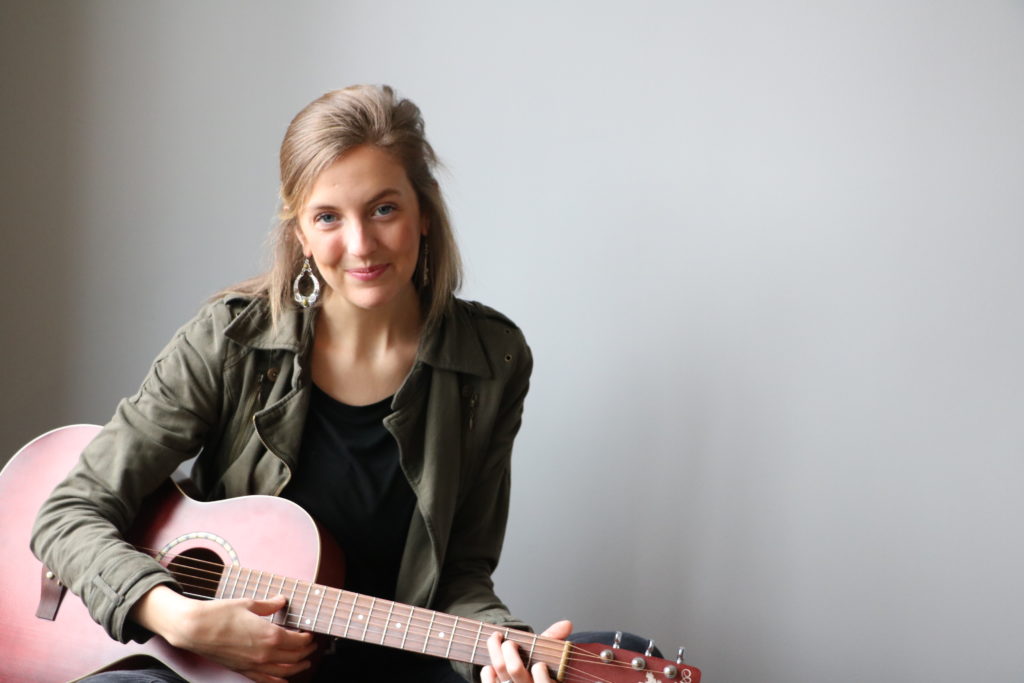A man is his 50’s was lying in bed at the Our Lady of Peace Hospice Residence, close to the time of his passing. He was surrounded by his young daughters who wanted to give their father a final gift of music. This family’s home had been filled with singing, making memories with beautiful voices and songs that became a treasured part of their life together.
Music Therapist Lydia J. Holmes entered the room, and suddenly the beautiful voices of the daughters came to life in perfect harmony, as she accompanied them on the guitar. Following the performance, one daughter said, “I think we should say goodbye to dad right now,” for in that moment, they all found peace in the music and the memories.
The rooms of patients at Our Lady of Peace Residential and Community Hospice are Lydia Holmes’ workplace. As a music therapist with Alliance Music Therapy, the moments within these spaces define her purpose of helping end of life be the best that it can be through the magic of music. Lydia says, “I meet people who are having difficulty communicating verbally, and I start singing a song that I think they might recognize, and in many cases, they start singing or humming along. That shared experience allows us to connect on a deeper level and begin to establish trust.
Elderly patients that are diagnosed with Alzheimer’s disease or dementia are not exempt from music therapy. In fact, they are wonderful candidates to receive the care. Lydia says, “They may lose some of their cognitive ability, or even their ability to speak, but they still hold onto the music, as the memories surrounding certain songs and lyrics (especially those from childhood and young adult years) are neurologically strong and sound.”
According to the American Music Therapy Association, music therapy formally began after World War I and World War II, when amateur and professional musicians went into veterans’ hospitals around the country to play for thousands of veterans suffering from the physical and emotional trauma of war. Although there are no formal reports, spirits were lifted and healing happened, leading to the realization and possibility of music therapy as a profession.
Our Lady of Peace nurses and social workers make a referral when they feel a patient could benefit from music therapy, and there is no cost to the patient for the service. Lydia comes in at that point to help people forget their pain by focusing on moments of happiness in their lives where music was present. “I ask them what kind of music they like. Have they sung in a choir or danced to a memorable song?” Then, Lydia uses her guitar, piano and vocal training to bring the memories to life. She says, “For 30-60 minutes, they are making their own choices and finding joy in memories of life, instead of focusing on dying.”
Lydia has also used music to provide comfort to patients’ loved ones like a woman, whose husband was passing away at Our Lady of Peace. Using a technique patterned after the work of Music Therapist Brian Schreck, Lydia recorded the heartbeat of the woman’s husband through a stethoscope. She combined it with a meaningful song to
the couple, and the patient’s heartbeat literally acted as the beat of the song. She gave the recording to his wife and she cherishes the recording to this day.
With compassion as deep as her repertoire of songs, Lydia brings the magic of music into the hearts of Our Lady of Peace patients. She says, “It’s truly an honor to work in hospice and to be invited into these sacred spaces with clients and their families. I only hope to use the music to facilitate the space well and provide patients with peace and rest at end of life.”
